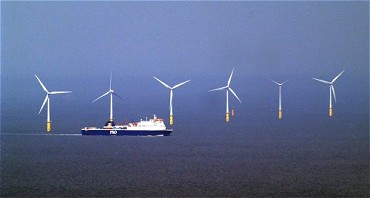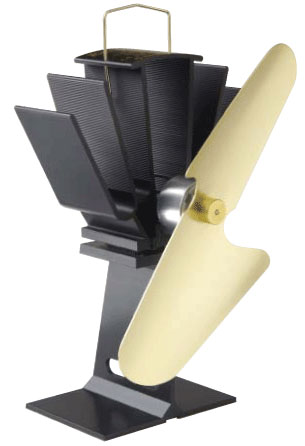Independently Powered Technology
Non-grid based powered items are set to take center stage. These can range anywhere from a flashlight or radio powered by a hand crank, to an entire business tower, which could be powered by myriad intertwining and complex energy re-capture and / or generation facilities.
Off the top of my head, i would say the non-grid dependent technology sect can break into three fairly distinct major categories; no power, human power and captured power. Although no powered solutions technically need power to work, and generally need human power, they do not require intentional energy investment, working instead off existing conditions. Examples being a duvet (which simply reflects and insulates), self-winding watches (that absorb the existing kinetic energy your wrist generates whilst swinging about) and those auto-darkening glasses for when it gets sunny. Although related to captured power, the big difference is that these solutions tend to only power them selves, while capture power technology is usually focused on the act of capturing energy, and then distributing it to other, energy dependent items.
 (Pictured is the North Hoyle Wind Farm, located off the coast of wales, which powers my laptop, mobile phone, stereo, fridge and everything else that takes electricity.)
(Pictured is the North Hoyle Wind Farm, located off the coast of wales, which powers my laptop, mobile phone, stereo, fridge and everything else that takes electricity.)
Obviously, captured power - like solar water heating, photo-voltaic electricity production, wind and / or wave energy generation - is fairly widely recognized, implemented and only set to expand into an even larger percentage of the market. Although many houses already depend on this technology sect - like ours - it is still largely under acknowledged and underused (renewable energy sourcing in the US accounts for something pitiful like 0.03 % of all energy used).
What is fascinating, however, is the burgeoning application and use of the other two sects. One of the easiest examples, and perhaps most tangible, is the bicycle. Man powered, non-fossil fuel dependent, and vastly more cost effective to maintain than every other mass-transit method, the bicycle could iconize a whole department of technology that we, as every day people never really think about as existing, let alone relative to our life; man power is largely free (it does cost food & beer) and underused. While skateboards and coffee grinders have little in common, they do feature a strange overlap: while one is distinctly man (or woman) powered, and the other is generally electric, there are versions of both devices that are the other way around. While motor powered skateboards are generally dismissed as simply inappropriate (in that missing-the-point kind of way), hand-powered versions of coffee grinders exist, and have existed (obviously) for far longer then their electric counterparts - but have you ever even seen one? We never think to apply man power to a device that we have been conditioned to accept as wall-power dependent.
Below is a product called the "Eco-Fan." Suffering from the "first wave of creativity within a field, so we'll copy the naming scheme until it has died the death of a thousand products" fate similar to that of the iPod (e.g., iMac, iLife, iDock, etc), this product does not feature a cool, or innovative name. But it sure does feature some cool technology.

from the website:
"These fans generate their own electricity using the heat from a stove. [When perched atop,] The fan acts like a large heat sink, drawing heat from the stove up through the aluminium base. Half way up the base is a peltier cooler. The temperature difference between the bottom and top of the base causes the peltier cooler to produce low voltage electricity. This powers the electric fan which blows warm air around the room. Suitable for an aga or wood/oil burning stove.
What are the advantages of using it?
Stoves are good a radiating the heat, but can sometimes leave parts of the room cold while, closer to the stove is lovely and warm. You may find yourself sitting closer to the stove just to keep warm. The ecofan helps to reduce this problem by blowing warm air around the room. The ecofan is a best seller in narrow boats where one end of the boat can be hot (by the stove) and the other end cold.
The Peltier-Seebeck effect
The peltier cooler in this fan uses the Peltier-Seebeck effect. In 1821, Thomas Johann Seebeck discovered that a solid metal bar that had a large temperature difference between the two ends produced an electric current."
Utilizing existing energy (the heat radiating up from any heat source but, namely, stoves, ovens, fireplaces and even radiators), this little doozy enigmatically is powered and distributes its power source with no tax on resource. (Well, technically you wont be able to use the heat it has absorbed and converted to electricity, but the net effect is a warmer room, which physiologically - and then psychologically - improves things.)
What i want to see is more simple solutions in the world. Sony just released a line of 'eco-sensitive" products, like a digital camera that you have to manually charge by spinning it on your finger (via a rubber finger hole) before you can shoot. The old school solution to using a heater is called a "sweater" and can be combined with "jacket" or "sock" technology. Electric toothbrush? Or simple elbow-grease?
A little rational thought can go a long way.
Off the top of my head, i would say the non-grid dependent technology sect can break into three fairly distinct major categories; no power, human power and captured power. Although no powered solutions technically need power to work, and generally need human power, they do not require intentional energy investment, working instead off existing conditions. Examples being a duvet (which simply reflects and insulates), self-winding watches (that absorb the existing kinetic energy your wrist generates whilst swinging about) and those auto-darkening glasses for when it gets sunny. Although related to captured power, the big difference is that these solutions tend to only power them selves, while capture power technology is usually focused on the act of capturing energy, and then distributing it to other, energy dependent items.
 (Pictured is the North Hoyle Wind Farm, located off the coast of wales, which powers my laptop, mobile phone, stereo, fridge and everything else that takes electricity.)
(Pictured is the North Hoyle Wind Farm, located off the coast of wales, which powers my laptop, mobile phone, stereo, fridge and everything else that takes electricity.)Obviously, captured power - like solar water heating, photo-voltaic electricity production, wind and / or wave energy generation - is fairly widely recognized, implemented and only set to expand into an even larger percentage of the market. Although many houses already depend on this technology sect - like ours - it is still largely under acknowledged and underused (renewable energy sourcing in the US accounts for something pitiful like 0.03 % of all energy used).
What is fascinating, however, is the burgeoning application and use of the other two sects. One of the easiest examples, and perhaps most tangible, is the bicycle. Man powered, non-fossil fuel dependent, and vastly more cost effective to maintain than every other mass-transit method, the bicycle could iconize a whole department of technology that we, as every day people never really think about as existing, let alone relative to our life; man power is largely free (it does cost food & beer) and underused. While skateboards and coffee grinders have little in common, they do feature a strange overlap: while one is distinctly man (or woman) powered, and the other is generally electric, there are versions of both devices that are the other way around. While motor powered skateboards are generally dismissed as simply inappropriate (in that missing-the-point kind of way), hand-powered versions of coffee grinders exist, and have existed (obviously) for far longer then their electric counterparts - but have you ever even seen one? We never think to apply man power to a device that we have been conditioned to accept as wall-power dependent.
Below is a product called the "Eco-Fan." Suffering from the "first wave of creativity within a field, so we'll copy the naming scheme until it has died the death of a thousand products" fate similar to that of the iPod (e.g., iMac, iLife, iDock, etc), this product does not feature a cool, or innovative name. But it sure does feature some cool technology.

from the website:
"These fans generate their own electricity using the heat from a stove. [When perched atop,] The fan acts like a large heat sink, drawing heat from the stove up through the aluminium base. Half way up the base is a peltier cooler. The temperature difference between the bottom and top of the base causes the peltier cooler to produce low voltage electricity. This powers the electric fan which blows warm air around the room. Suitable for an aga or wood/oil burning stove.
What are the advantages of using it?
Stoves are good a radiating the heat, but can sometimes leave parts of the room cold while, closer to the stove is lovely and warm. You may find yourself sitting closer to the stove just to keep warm. The ecofan helps to reduce this problem by blowing warm air around the room. The ecofan is a best seller in narrow boats where one end of the boat can be hot (by the stove) and the other end cold.
The Peltier-Seebeck effect
The peltier cooler in this fan uses the Peltier-Seebeck effect. In 1821, Thomas Johann Seebeck discovered that a solid metal bar that had a large temperature difference between the two ends produced an electric current."
Utilizing existing energy (the heat radiating up from any heat source but, namely, stoves, ovens, fireplaces and even radiators), this little doozy enigmatically is powered and distributes its power source with no tax on resource. (Well, technically you wont be able to use the heat it has absorbed and converted to electricity, but the net effect is a warmer room, which physiologically - and then psychologically - improves things.)
What i want to see is more simple solutions in the world. Sony just released a line of 'eco-sensitive" products, like a digital camera that you have to manually charge by spinning it on your finger (via a rubber finger hole) before you can shoot. The old school solution to using a heater is called a "sweater" and can be combined with "jacket" or "sock" technology. Electric toothbrush? Or simple elbow-grease?
A little rational thought can go a long way.





Post a Comment
<< Home